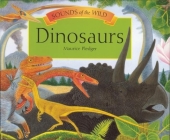So that explains "Wick-ee! Wick-ee!" I've always wondered.
 |
Your recounting of some of the catch phrases that have made their way into daily parlance makes me think of so many things: calling Eleanor a "grumpy bird" and having her admit it; agreeing, as Frances says in Bread and Jam for Frances, "I do like snacks"; our entire bedtime routine based on Goodnight Moon.
 But what I want to write about tonight is a catchphrase from my own childhood, which comes from a story in a series we often carry with us in the diaper bag for long subway trips: Arnold Lobel's Frog and Toad. These books are great re-reads, both because they tap into something visceral in kids' emotions, and because they're quite funny.
But what I want to write about tonight is a catchphrase from my own childhood, which comes from a story in a series we often carry with us in the diaper bag for long subway trips: Arnold Lobel's Frog and Toad. These books are great re-reads, both because they tap into something visceral in kids' emotions, and because they're quite funny.There are four Frog and Toad books:
Frog and Toad are Friends, Frog and Toad Together, Frog and Toad All Year, and Days With Frog and Toad. In each, Frog (taller, greener, generally more able to enjoy life) and Toad (shorter, browner, more neurotic) spend time together and have very low-key adventures. A typical plot: Frog and Toad go for a long walk. Toad gets back, realizes he's lost a button from his jacket, and gets upset. Frog reassures him they'll find the button, and they retrace their steps. They find lots of buttons, but all are in some way wrong, and Toad gets more and more worked up: "'That is not my button!' wailed Toad. 'That button is square. My button was round.'" When he gets home after his giant tantrum (so much fun to read aloud), Toad finds his button on the floor. He feels terrible, and to make amends, sews all the other buttons he's found onto his jacket and gives the jacket to Frog as a present. ("A Lost Button," in Frog and Toad Are Friends.)
The catchphrase I mentioned earlier comes from the story "Cookies," in Frog and Toad Together. Toad makes an amazing batch of cookies, and shares them with Frog. The two can't stop eating them. To exercise will power, Frog tries in several ways to make the cookies less accessible: he puts them in a box, ties it up, puts them on a high shelf, etc. In every case, Toad points out quite reasonably how he could get them again. Finally, Frog gives up:
Frog climbed the ladderand took the boxdown from the shelf.He cut the stringand opened the box.Frog took the box outside.He shouted in a loud voice,"HEY BIRDS,HERE ARE COOKIES!"Birds came from everywhere.They picked up all the cookiesin their beaks and flew away."Now we have no more cookies to eat,"said Toad sadly."Not even one.""Yes," said Frog,"but we have lots and lotsof will power.""You may keep it all, Frog,"said Toad."I am going home nowto bake a cake."
You'd be surprised how often "HEY BIRDS, HERE ARE COOKIES!" can come up.
Each Frog and Toad book contains five short stories, all illustrated by Lobel in green and brown accented line drawings. Some of them are sweet and funny, and some a little dark and odd, exploring the fear of being alone or being laughed at. At times, reading them, I've wondered if Lobel was in some kind of psychoanalysis while he was writing: what is up with Toad dreaming of himself dancing and singing beautifully on a stage while Frog gets smaller and smaller in the audience, then disappears ("The Dream")? Overall, these are books I am happy to read and read and read again. And that means a lot.
Love, Annie

No comments:
Post a Comment